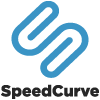
Alex Banks
Software Engineer and Owner, Moon Highway
Alex Banks is a software engineer for Moon Highway, Lynda.com author, and JavaScript enthusiast. He started writing code at the age of eight years old on his first computer, a Tandy TRS-80. In 1995, Alex developed his first website and has been hooked ever since. Alex now lives in Tahoe City, California, and he provides classroom and online-based training regularly for Yahoo, eBay, PayPal, Stanford University, and other companies across the country. When Alex isn’t in a classroom, he spends his time developing applications, learning new technologies, and writing custom training curriculums with Moon Highway. He is also the author of O’Reilly’s Learning React and Learning GraphQL.
Sessions
Sponsorship Opportunities
For exhibition and sponsorship opportunities, email fluent@oreilly.com
Partner Opportunities
For information on trade opportunities with O'Reilly conferences, email partners@oreilly.com
Contact Us
View a complete list of Fluent contacts
©2018, O'Reilly Media, Inc. • (800) 889-8969 or (707) 827-7019 • Monday-Friday 7:30am-5pm PT • All trademarks and registered trademarks appearing on oreilly.com are the property of their respective owners. • confreg@oreilly.com





